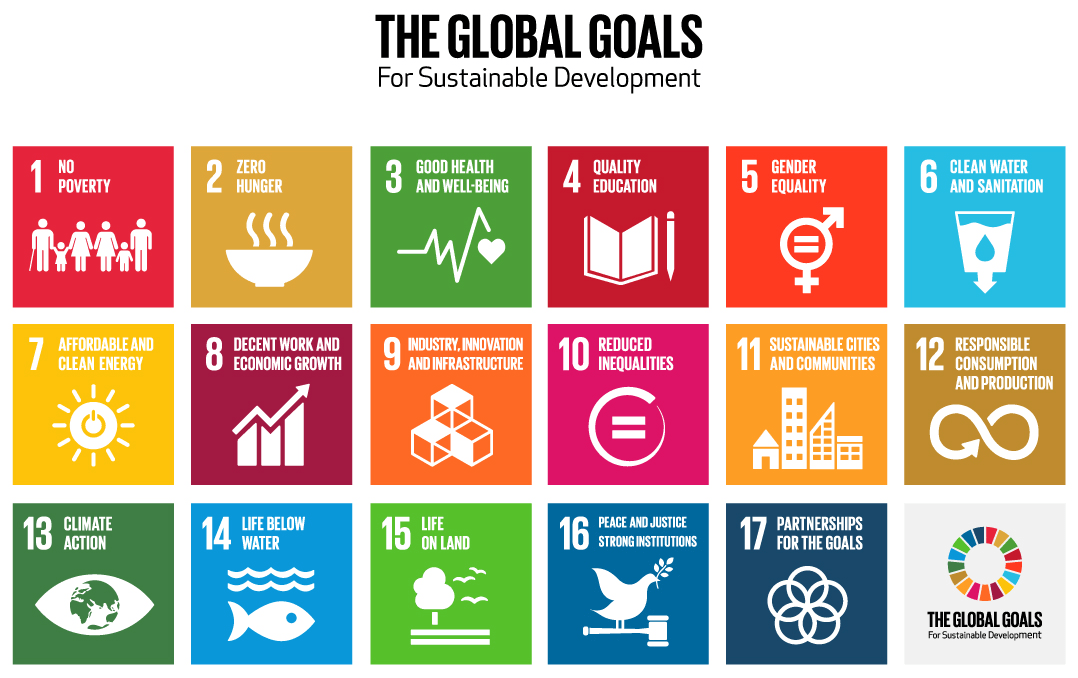Understanding Sustainability
The concept of sustainability carries the aim of improving prospects for people across the globe whilst protecting the natural systems that life depends upon. Visions of sustainable futures see the need for a paradigm shift in our understanding, to reflect the limits on our planetary resources and to factor in the justice and equity considerations involved in realising this vision.
What is sustainability?
As an idea, sustainability – or sustainable development – recognises that our health, cultural, financial, security and environmental issues are not separate, competing, and hierarchical, but systemic and interdependent. This is explained simply as the 3 pillars or ‘triple bottom line’ of economy, society and environment, reflected in the UN Sustainable Development Goals framework.
There are many definitions of this concept, which started to rise to public attention after the 1970s, having emerged from the study of natural systems and forestry management practice. Some definitions also add ‘culture’ as a 4th linked pillar of the sustainability agenda.

The most quoted definition is from ‘Our Common Future’, the 1987 publication of the United Nations World Commission on Environment and Development – known as the Brundtland report:
Sustainable Development is development which meets the needs of the present without compromising the ability of future generations to meet their needs
Useful concepts and terms
Net Zero
An overall balance between carbon released into the atmosphere and carbon taken out. The first step to net zero is always to reduce emissions as much as physically possible. Residual emissions can be ‘offset’ by investment in projects and schemes to compensate the remaining emissions, so that total carbon put in and total carbon taken out, balance at zero. The UK has a target to become a net zero country by 2050 and our university has set its net zero target as 2030 – see our Carbon Net Zero FAQs.
Environmental, Social and Governance (ESG)
Categories companies can use to evaluate and report performance on specific issues linked to sustainability, such as management and use of natural resources, data related to people employed, such as pay equality or diversity and inclusion, and compliance with legislation such as anti-slavery or money laundering.
Futures Thinking
Imagining different futures that have more than just financial benefit or economic growth as their fundamental aims, but also create value for society and nature. This involves envisioning new goals and pathways to achieve them, abandoning existing assumptions and practices, and planning steps and approaches to deliver the vision.
Systems thinking
A way of analysing scenarios that recognises that nothing works in isolation and decisions taken with good intention to tackle a problem in one area can have a negative effect elsewhere. It can help people to ‘zoom out’ and see the bigger picture and interlocking parts of how existing systems are working, both technically and in our habits and practices – helping to create more holistic and resilient plans and interventions.
Environmental Impact Assessment (EIA)
An environmental decision-making tool used to identify, predict, evaluate and mitigate the possible impacts of development, including aspects like noise, visual intrusion, traffic, emissions, biodiversity loss and flooding.
Ecological Impact Assessment (EcIA)
Establishes baseline ecological conditions such as presence of any rare or important habitats and species, as well as the impact development could have on the identified species and habitats, and potential mitigation or compensation measures. Can be done as part of an EIA or as an independent analysis.
Biodiversity Net Gain
Strategies and practices that aim to leave the natural environment in an overall measurably better state after new developments or actions than before. A minimum net gain of 10% is now required by UK law.
Sustainability on the international stage
In 2015, UN Member States adopted the 17 Sustainable Development Goals, as successor to the Millennium Development Goals.
This intergovernmental agreement – Transforming our world: the 2030 Agenda for Sustainable Development – followed the ‘Rio+20’ Earth Summit in 2012. It aims to connect global economic, social and environmental goals, to advance the post-2015 development agenda, with indicators of progress set for each of these 17 Global Goals.
Sustainability in Higher Education
Universities are guided by the aim of being beacons and connectors for society, acting to build on foundational knowledge and break new ground through research, education and collaboration. In a rapidly changing world facing complex challenges, the higher education community is increasingly active on sustainability, to support the needs and interests of its wider global student population and its commitment to communities worldwide.
In the UK university sector, sustainability innovation has been supported by HE funding agencies of all the devolved administrations, with the involvement of the National Union of Students (NUS) and other student-led organisations and education agencies. Capacity building schemes such as the £5m Student Green Fund led by the NUS and Climate Commission led by the EAUC have helped to connect students and staff to inspire practical action.
Student-led groups and organisations have played key roles in driving this change within the sector, including the charity SOS-UK and the campaigning group People and Planet, developing support programmes and performance assessments to encourage change in universities.
Increasing attention is now on Education for Sustainability and the importance of changing the core course experience in universities to support wider change, in addition to the development of research and improvements to core university operations.
For a quick orientation see our briefing on sustainability, EfS and higher education

